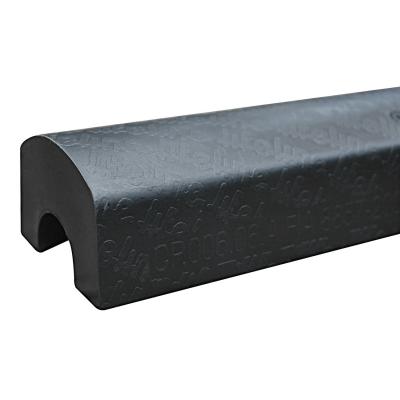FIA Approved Roll Cage Padding
- Manufacturer:
- Lifeline
- Click here for:
-
FIA Roll Cage Padding Technical
Lifeline has developed the most complete range of Roll Cage Padding approved by the FIA for use in International motorsport. Conforming to the latest FIA standard for Roll Cage Padding this Type A product has been developed to offer superior in-cockpit protection, having been subjected to extremely rigorous impact and flame retardency laboratory testing.
Supplied in 600mm lengths the roll cage padding can be easily cut to fit and is supplied with heavy duty self adhesive tape for ease of installation.
Available in 5 different tube sizes 32, 38/40, 45, 50 and 60mm, please select required size from drop down menu above when ordering.
FAQ: Why is FIA approved roll cage padding so hard? The FIA specified tests require a simulated human headform in crash helmet to impact at no greater than 300g. To achieve this requires special energy absorbing material but which does not protrude significantly into the cockpit of what is already a restricted space because of modern roll over protection systems.
The vast majority of FIA approved paddings achieve this with a thickness of just over 25mm and therefore have to be made from fairly rigid polymer type materials. The alternative would require around 75mm of softer material, such as Confor foam, so inevitably there is a compromise for the solution. You might consider the hardness of similarly rigid car dashboard material and which has to demonstrate similar energy test results.
Supplied in 600mm lengths the roll cage padding can be easily cut to fit and is supplied with heavy duty self adhesive tape for ease of installation.
Available in 5 different tube sizes 32, 38/40, 45, 50 and 60mm, please select required size from drop down menu above when ordering.
FAQ: Why is FIA approved roll cage padding so hard? The FIA specified tests require a simulated human headform in crash helmet to impact at no greater than 300g. To achieve this requires special energy absorbing material but which does not protrude significantly into the cockpit of what is already a restricted space because of modern roll over protection systems.
The vast majority of FIA approved paddings achieve this with a thickness of just over 25mm and therefore have to be made from fairly rigid polymer type materials. The alternative would require around 75mm of softer material, such as Confor foam, so inevitably there is a compromise for the solution. You might consider the hardness of similarly rigid car dashboard material and which has to demonstrate similar energy test results.













